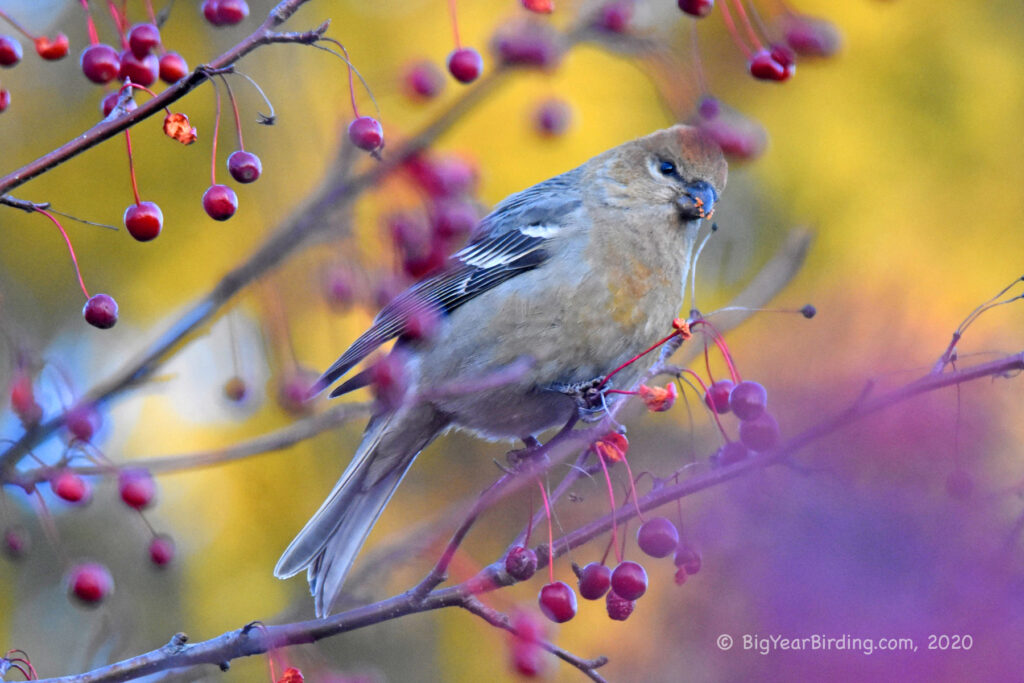
The Pine Grosbeak (Pinicola enucleator) is a large finch that inhabits the boreal forests of North America and Eurasia. It measures about 8.5 to 10 inches (21 to 25 cm) in length and weighs around 2.3 to 3.5 ounces (65 to 100 g), making it one of the heaviest finches in the world. The male and female birds are similar in appearance, with striking red or pinkish-red plumage on their heads, breasts, and backs, while their wings and tails are black with white wing bars.

One of the distinguishing field marks of the Pine Grosbeak is its large, thick bill, which is ideal for cracking open hard seeds and cones. The bill is slightly curved and has a pale tip, which contrasts with the dark base. Another feature that sets this bird apart is its rounded head and fluffy plumage, giving it a puffy appearance. The Pine Grosbeak also has a distinctive call, which is a mellow warble or a series of clear whistles.
The Pine Grosbeak is a non-migratory bird that typically resides in the boreal forests throughout the year. However, some populations may move southward during the winter months in search of food, particularly when food supplies are scarce in their breeding range. In North America, the Pine Grosbeak can be found in Alaska, northern Canada, and some parts of the northern United States. In Eurasia, its range extends from Scandinavia to Siberia and down to northern Japan.
During the breeding season, the Pine Grosbeak inhabits coniferous forests, where it builds its nest in the branches of spruce or fir trees. The female typically lays 3 to 5 eggs, which are pale blue or green with brownish spots. Both parents take turns incubating the eggs and caring for the young birds, which fledge after about 14 to 16 days.

In conclusion, the Pine Grosbeak is a distinctive and fascinating bird that is known for its large size, thick bill, and striking red plumage. Although it is a non-migratory species, some populations may move southward during the winter months. Its breeding range is located in the boreal forests of North America and Eurasia, where it builds its nest in coniferous trees and raises its young.

